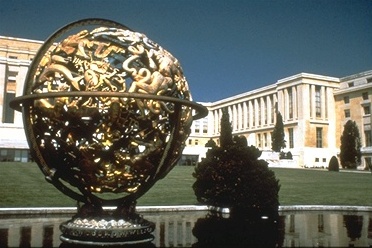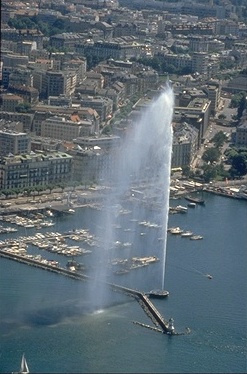
30th December 2000
Geneva / Switzerland

 |
Global Peoples' Convention
30th December 2000 Geneva / Switzerland |
 |
|
Global Peoples’ Convention - a Vision of PeaceSince time immemorial, mankind has had a dream: the dream of peace, where all the peoples can live in a state of justice and security throughout the world. The most renowned personalities in history - philosophers, theologians, statesmen, artists - have again and again defined peace as the highest value that humankind can aspire to. But how do we reach a state of world peace? What we do know for sure, is that peace does not simply "happen"; peace has to be "made". A secure, just, durable peace has to be negotiated, as an expression of strong intent, and drafted as a legally binding and enforceable contract between all the parties concerned. In this sense, peace is not a dream: peace is an agreement. So, the question is: is the world ready to agree on peace? Fifty years ago, on 30th December 1950, delegates from all over the world gathered in Geneva to ponder the question of what kind of peace humankind should agree on. The basic assumption was that all the peoples of the world should be represented in equal numbers, in direct proportion to the size of their population, in order for any peace agreement to be regarded as democratic and just; and the agreement should take on the form of a social contract, or, politically speaking, a global constitution. The outbreak of the Cold War set a quick end to those early deliberations. Today, more than ten years after the end of the Cold War, and at the dawn of a new millennium, the time has come to resume the talks and to set out on a course that will ultimately lead us towards a peace result. Again, we have to make sure that all the peoples can participate on an equal basis, and again the main topic of the discussion will be: what kind of peace should we really agree on? And this time around, no disputes or conflicts anywhere shall stop us from reaching our goal. The challenges are daunting. Enormous problems have to be faced - and solved - like hunger, scarcity of drinking water, dwindling natural resources, nuclear waste, overpopulation, climatic changes, AIDS. And only if we are all willing to accept the principle of equality among all the peoples can we hope to achieve a just solution in the spirit of world peace. Challenging as it may be, we trust that sufficient human will is there, and that a realistic concept can be worked out. Peace is no longer a dream; peace has become a project. Ours is but one world where we humans can ever
hope to live. So let it be a world at peace, for our children's sake,
and for our children's children.
|
*
* * ![]() *
* *
*
* *
Original text written by: Peter Kasser
22nd December 1999
Last update: 24th June 2001